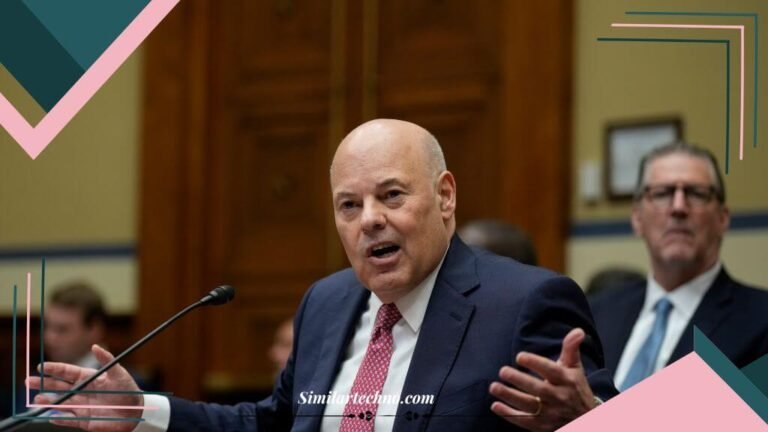The TikTok ban—a topic that has sparked debates worldwide—became personal for me when I faced it firsthand. As someone who loved scrolling through creative videos and even shared a few myself, the sudden block left me searching for alternatives. While I understood privacy and data security concerns, I couldn’t ignore the impact on creators, small businesses, and even my daily entertainment. The TikTok ban was more than just a policy change—it disrupted routines, reshaped the digital landscape, and raised questions about balancing safety and freedom. Join me as I share insights, lessons, and what I think could be done better in the future.

What is the TikTok Ban?
The TikTok ban refers to a government’s decision to block or restrict the use of TikTok within its borders. This can happen for several reasons, including concerns about user privacy, data security, or the potential misuse of the platform. When a TikTok ban is enforced, users can no longer download or access the app through their internet connection. Some prohibitions are partial, where only certain features are limited, while others are total, removing TikTok from app stores entirely. Countries like India have implemented a complete TikTok ban, citing national security reasons, while others, like the United States, have considered similar measures in the past. These bans often spark debates about balancing user safety and personal freedom in the digital world.
Why is TikTok Banned in Some Places?
The TikTok ban is often enforced in some countries due to concerns about data privacy and misinformation. Governments worry that the app may collect sensitive user data and share it with foreign entities, which could pose security risks. TikTok’s algorithms collect vast user information, raising questions about how the data is stored and used. Another reason for the TikTok ban is the spread of misinformation and harmful content. Critics argue that the app can promote fake news, dangerous challenges, or inappropriate material, which could negatively impact society, especially young users. These concerns lead authorities to restrict or completely ban TikTok to protect their citizens. Such decisions often spark debates about whether banning the app is the best solution to these issues.
Read More: Meta Layoffs: Shocking Cuts Reshaping the Tech Giant 2025
How the TikTok Ban Affects Users
The TikTok ban significantly impacts users by removing a popular source of entertainment and creativity. Millions of people use TikTok daily to watch and share videos, and the ban forces them to look for alternatives. The ban creates serious challenges for creators as they lose a platform where they showcase their talents, build followings, and earn income. Many small businesses also rely on TikTok to market their products to a broad audience. Without it, they face difficulties in reaching potential customers. The TikTok ban disrupts these connections and leaves users, creators, and businesses scrambling to adapt. While some migrate to other platforms, the shift often takes time and effort, making the ban more than an inconvenience—it changes how people engage with digital content.
Countries With TikTok Restrictions
The TikTok ban has been enforced in various forms across different countries, with some implementing partial restrictions and others opting for complete bans. India is a prominent example, where the app has been entirely banned since 2020 due to concerns over data privacy and national security. The United States has also considered restrictions, citing fears of sensitive user data being accessed by foreign entities. Pakistan has temporarily banned TikTok several times, primarily for hosting inappropriate content or against local cultural norms. In contrast, countries like Australia and the United Kingdom have raised concerns but have not enforced outright bans. These restrictions often stem from worries about user safety, harmful content, or geopolitical tensions. The TikTok ban in these regions highlights the balance governments try to maintain between technological innovation and protecting citizens.
Debates Around
The TikTok ban has sparked many debates, with supporters and critics voicing strong opinions. Those in favor argue that the ban is necessary for security and safety reasons. They believe that TikTok’s data collection practices could risk users’ personal information, especially given its links to China. Supporters also point out that banning TikTok can help prevent the spread of harmful content or misinformation. On the other hand, critics argue that the TikTok ban limits freedom of expression. They claim banning the app infringes on people’s right to share ideas and creativity freely. Critics also believe that governments should focus on regulating and ensuring safer usage instead of banning TikTok. These opposing views highlight the ongoing struggle between protecting citizens and preserving personal freedoms in the digital age.
Read More: Walmart Logo: A Bold Symbol of Retail Success 2025
Alternatives to TikTok After the Ban
When the TikTok ban affected users, many used other apps for entertainment. Popular alternatives include Instagram Reels, YouTube Shorts, and Snapchat Spotlight. These apps offer similar features, allowing users to create and share short videos. Instagram Reels, for example, provides a similar video-editing experience, while YouTube Shorts offers a larger platform with its established user base. On the other hand, Snapchat Spotlight caters to younger audiences with its playful filters and instant sharing options. While these alternatives try to mimic TikTok’s format, they each bring something unique to the table. For instance, Instagram Reels has better integration with photos and stories, while YouTube Shorts provides better opportunities for longer-form content. Though these alternatives are popular, many users still feel that the dynamic community and creativity the TikTok ban took away are incomparable.
The TikTok Ban and Young Users
The TikTok ban has a noticeable impact on teenagers, as many use the app as a significant part of their daily routine. For these young users, TikTok is not just about entertainment—it’s a way to stay connected with friends, follow trends, and express themselves. Losing access to the app can disrupt their daily habits and make them feel disconnected. Parents and educators are also concerned about the effects of the ban. While some see it as a chance for teens to focus on other activities, others worry that the prohibition may push young people to less regulated platforms. Parents often express fears about their children’s screen time, and educators point out that TikTok has educational content that some students may miss. The TikTok ban raises questions about balancing online safety with the interests of young users.
Economic Impact
The TikTok ban has a significant effect on TikTok as a company. Losing access to millions of users in specific regions directly impacts its revenue, mainly from ads and partnerships. TikTok also faces challenges in maintaining its global reach, forcing the company to rethink strategies and possibly face financial losses. The TikTok ban also hurts content creators who rely on the platform for their livelihood. Many influencers have built careers around TikTok, earning money through brand deals and sponsored content. Without TikTok, they lose a significant source of income and have to shift to other platforms. Local businesses that use TikTok to advertise their products also feel the impact. The ban reduces their ability to reach potential customers, especially those targeting younger audiences who are most active on the app. The economic fallout from the TikTok ban is broad, affecting both the company and its users.
Read More: CMS launchpad: Discover the Powerful Benefits 2025
Steps to Address Concerns Without a Ban
Instead of a TikTok ban, better regulation could be a solution to address concerns about privacy and safety. Governments could create stricter rules on how apps handle user data and ensure they comply with local laws. This way, users’ personal information is better protected, and apps can still operate freely. Companies like TikTok could also implement more transparent policies on data collection, allowing users to make informed choices. Users can also take steps to protect their data online. Using stronger passwords, enabling two-factor authentication, and being cautious about what information is shared on the app can help keep their accounts safe. Additionally, users can limit the permissions granted to TikTok and other apps, controlling what they access. By combining regulation with better online habits, we can ensure a safer digital space without resorting to a TikTok ban.
What’s Next for TikTok?
The future of TikTok in regions where it’s banned looks uncertain. In some places, like India, the TikTok ban may remain in effect for the foreseeable future, while in others, the company is actively working to lift restrictions. TikTok might negotiate with governments to prove it can better protect user data or make necessary policy adjustments. The company’s efforts to rebuild trust are ongoing. TikTok has already improved transparency by setting up data centres in certain regions to handle local data and collaborating with independent auditors. They’re also focusing on content moderation to avoid spreading harmful material. The next few years will be crucial for TikTok as it works to regain access to banned areas and maintain its reputation while responding to user and government concerns.
FAQs
What is a TikTok baned?
A TikTok ban occurs when a government blocks access to the app due to concerns over privacy, security, or content.
Which countries have implemented a Tik-Tok ban?
Countries like India, Pakistan, and some parts of the United States have imposed partial or complete bans on TikTok.
Why was Tik-Tok banned in India?
India banned TikTok in 2020 due to national security concerns and data privacy issues related to the app.
How does the Tik-Tok ban affect creators?
The TikTok ban impacts creators by removing a significant platform for sharing content and earning income.
Can TikTok be unbanned in restricted regions?
TikTok can be unbanned if it addresses regulatory concerns or changes its practices to meet local requirements.
Conclusion
The TikTok ban has sparked intense discussions across the globe, affecting millions of users, creators, and businesses. While supporters argue that the ban is necessary to address concerns about privacy and misinformation, critics believe it limits freedom of expression. The ban has also pushed many users to explore alternative platforms, but none entirely match TikTok’s unique appaeal. The impact on creators and businesses has been particularly significant, as they lose a valuable avenue for content creation and marketing. However, the future of TikTok remains uncertain, with the company working hard to rebuild trust and navigate regulatory challenges. Ultimately, the TikTok ban highlights the need for a balanced approach that protects user safety and the freedom to create and share content.







